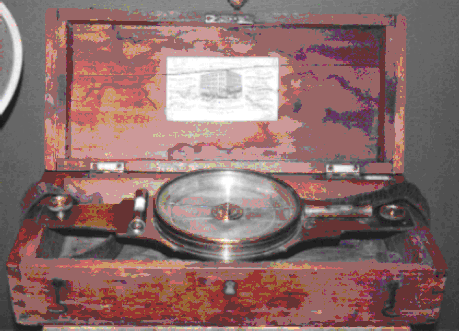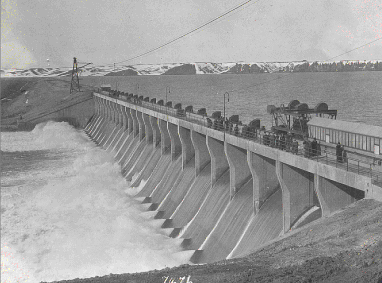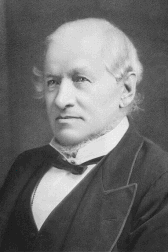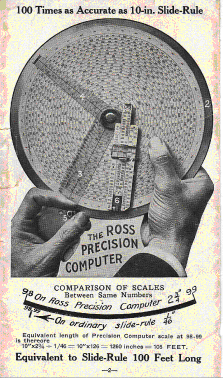
Irrigation has played an important part in the settlement and development of southern Alberta. When settlers first arrived, they discovered that the areas around Lethbridge contained good soils and a long enough growing season to produce wheat. But low rainfall levels made farming risky. Also Lethbridge farmers had to deal with strong, dry winds, which caused much of the water to evaporate. Because of this, early business leaders and farmers saw the need for a steady supply of water. They decided to build an irrigation project that would take water from the area’s streams and rivers into a system of reservoirs and canals. Farmers could use water from these reservoirs and canals for their crops.

P19640920000-GA This compass and level were used by the Dominion Government's Allocator of Lands to survey fence lines for homesteads in the Claresholm area.
Members of the Galt family were the first leaders in the Lethbridge area to try building an irrigation system for their land. The Galts owned a railway company and because of that the government had given them a great deal of land. But,they were not making any money from this land because settlers would not come to an area that was so dry. So, the Galts tried irrigation as a way of getting more settlers to their land.
Their first attempt at irrigation was made in 1887. They invited Charles Ora Card and 41 members of the Mormon church to irrigate the lands of their new settlement near Lethbridge. Card and the other Mormons had learned the skills to build irrigation systems while they lived in Utah, and they put these skills to use in the area near Cardston.

P19800207071-GM St.-Mary's Dam
A larger irrigation project was attempted in 1893. The Galts’ two companies, the Northwest Coal and Navigation Company and the Alberta Railway and Coal Company, were brought together to form the Alberta Irrigation Company. The merger gave the Galts the money and the land needed for the project. But the Galts still needed help from the Canadian Government and investors to make the project work. These problems delayed the project for five years. On August 26, 1898, Charles Card finally began the project by plowing the first ditch for the St. Mary’s Canal.
The project worked by digging a canal between the towns of Magrath and Stirling. The canal began at the St. Mary's river where it took some of the rivers flow into the canal. Mormons from southern Alberta and the United States worked on the project and were paid with land and money. At first the project did not bring water to Lethbridge, but the people of Lethbridge wanted irrigation too. So they voted to put $30 000 towards the building of a canal that would irrigate 8065 hectares around the city.

P19737725000-GM Sir Alexander Tilloch Galt
When all the canals of the St. Mary's irrigation system were finished they were 192 kilometres long. Workers moved more than one million cubic metres of dirt, and over 915 000 metres of wood was used. No motorized machinery was used in the canal’s construction; all digging was done by horses and men. Even without the use of machinery, construction went so fast that by the end of August 1899 there were only 25 kilometres of canal left to be built between Magrath and Stirling.
Even though the construction of the canal went well, people were still unsure about settling near Lethbridge. Plus, for a few years after the canal was finished, there was enough rain for farmers and they didn't need irrigation. Settlement and orders for water only picked up when the next dry spell hit the region.

P19850019002-GA Precision Computer brochure. Engineers used the device to calculate angles and distances when constructing irrigation systems.
The St. Mary's irrigation project was soon a success, but by the middle of July each year the canals would run dry. As more people settled, the problem became even worse. It was decided that large reservoirs were needed to store the spring runoff from the mountains. To do this, the Government of Canada began the St. Mary's Reservoir in 1946 and completed the project in 1951. The reservoir made sure that water would last for the whole growing season.
The St. Mary's was the first irrigation system to be built in southern Alberta, but it was not the last. Other projects were built that used other rivers such as the Oldman, Bow, and Red Deer. Irrigation is still used for much of southern Alberta and is one of the main reasons that its agriculture is so successful today.
 Types of Irrigation
Types of IrrigationPrevious Page | Exhibit Contents | Home | Navigation Information | Glossary | Curriculum Guide | Next Page
Copyright © 1996 Sir Alexander Galt Museum. All rights reserved.